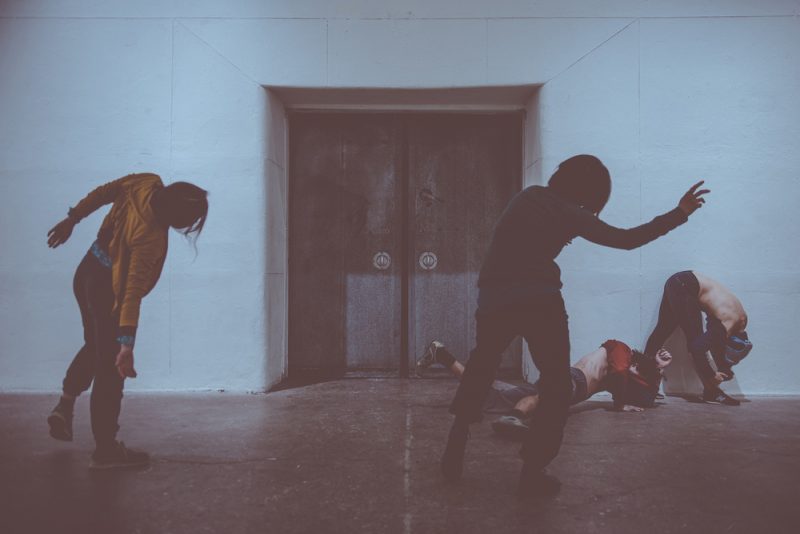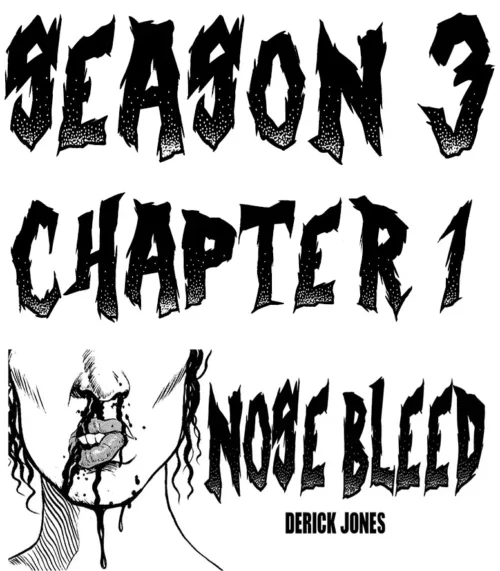Grappling with the market in order to find affordable studio or exhibition space can often be the bane of an artist’s practice. Many an artist-run collective has met its demise at a landlord’s whim or when rent simply became too high. That space is a prohibitive, yet integral, factor for many creative individuals is part of what makes the Icebox Project Space in Fishtown’s Crane Arts building such a vital local institution.
A self-described “project space,” the Icebox is, at times a gallery, a studio, a performance venue and more. Its true beauty lies in its sheer size and malleability — traits co-directors Tim Belknap and Ryan McCartney take full advantage of.

The Birth of a Project Space
When Belknap and McCartney came to the helm of the Icebox back in 2013, the space was already somewhat of a destination for artistic collaboration. In fact, the cut-metal “ICE” sign on the outside of the building is a holdover from its days as the International Curatorial Exchange. During this time, the space was associated with exchange programs including Temple University’s campus in Rome, and Queensland College of Art’s POP Gallery in Brisbane, Australia. This early period also found the Icebox heavily dependent on the greater Crane Arts community, and it was frequently rented out for private events like weddings in order to keep it viable.
With the metamorphosis into the Icebox Project Space, Belknap and McCartney got to work envisioning projects and events of their own — ending the rental program altogether in order to focus exclusively on curation. “We went all out on every project,” explains McCartney. “At that point, we were planning exhibits, as well as doing all the setup and fabrication for every show. In our show Winter Down, we even built a functional suspension bridge in the middle of the room.”
After a while, the constant conceptualization and physical labor required to bring each event to fruition began to take its toll, and the pair decided their energy could be better spent in other ways. Instead of starting with an idea, and then finding artists, they decided to have artists bring their own proposals to the table.“Helping others’ ideas take form and lending a critical eye became our strategy,” Belknap adds. “We didn’t want to bill ourselves as fabricators, but as directors.”
An Expanded Vision
With an incredible, cavernous location at their disposal, and the expertise required to adapt it to a breadth of artistic visions, Belknap and McCartney have steadily grown the Icebox into one of Philadelphia’s most creatively diverse destinations, particularly for large-scale undertakings. Last September, the Distance≠Time multimedia exhibition, which featured installations, performances, and workshops with Black Quantum Futurism and Culture Industry [Dot] Club, culminated in the Icebox’s first book published with an ISBN number, funded in part by a Penn Treaty Special Services District grant. In June, the Icebox launched a new, independent website (it was formerly just a page on Crane’s) and partnered with the Leeway Foundation for the No/New Rites residency, exploring diaspora and migration.

Currently, the Icebox is set up for movement, with a newly-installed Marley performance floor. The Kinematic Workshop, which kicked off on August 9 with a video screening of Headlong Dance Theater’s 2009 piece, More, will offer a series of six movement-based, free public workshops which will explore various approaches to conscious movement within a space and in relation to others. For the duration of the Kinematic Workshop, which concludes on September 1, the Icebox Project Space is also inviting community members to use the dancefloor free of charge.
The Future is Fem(inist KillJoy)
For the future of the Icebox, there is an awful lot in the works — not least of which is a recently announced grant from the Pew Center for Arts & Heritage. These funds will allow the Icebox to present the next iteration of KillJoy’s Kastle, a radical lesbian-feminist “haunted house” by Toronto-based artists Allyson Mitchell and Deirdre Logue. This acclaimed, interactive performance installation, which has already taken up temporary residence in Toronto, Los Angeles, and London, consists of 8-10 rooms in which visitors encounter ghosts, riot ghouls, demented women’s studies professors, queer zombies, and the like. Unlike traditional haunted houses, however, there will be no depictions of violence or terror. Instead, the experience will rely on intersectional feminist theory, and the sculptural elements that comprise the space will be constructed and activated by local Philly artists.

For KillJoy’s Kastle, the emphasis is on building community and reaching across demographic divides by tapping into existing artistic and LGBTQIA networks in the Philadelphia area — a strategy that Mitchell and Logue have successfully demonstrated in prior manifestations. After a more than year-long process of meeting with and selecting artists, organizing ideas for the themed rooms, and constructing the space, the installation will open to the public for a ten-day span in October 2019. Admission will be free, but limited by the number of tours allotted for the day.
It is hard to overstate the creative opportunities that the Icebox has already afforded artists from Philadelphia and beyond. With KillJoy’s Kastle bringing its paranormal brand of feminist theory to the space it’s clear that the Icebox will remain a relevant and influential fixture in the community well into the future.
The Icebox Project Space is located in the Crane Arts Building at 1400 N American St, Philadelphia, PA 19122. For more on the Kinematic Workshop visit the new Icebox website









